ROADMAP TO NORMALITY
The path for our sector
by TurfPro Editor, Laurence Gale MSC, MBPR
The coming weeks will mean a busy time for turf professionals, having to prepare for a cross section of winter and summer sports, that may overlap the traditional seasons.
It was with great joy that I received the call to get my Covid vaccine last week.
For the first time in months, I finally felt we can see an end to this pandemic. With over 20 million people now vaccinated, there seems to be a light at the end of the tunnel, especially cemented by the recent announcement by Boris on the government’s road map to recovery.
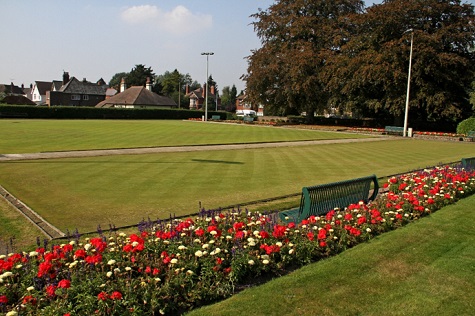
In terms of getting back too normal, the Government announced a four step road map to recovery, which included various points of interest for our sector:
Step one :- Golf courses along with tennis courts and other outdoor sport facilities will reopen from 29 March.
Also on this date, organised sport for adults and children, like grassroots football, will be able to restart.
This stage of the lockdown roadmap will also see schools in England reopen for all pupils from 8 March. Outdoor after-school sports clubs and activities will also be allowed to restart.
Step Two:- Data allowing, golf clubhouses and hospitality venues will then be allowed to reopen on April 12th at the earliest, serving food and beverages outside, with pro shops also allowed to reopen their doors. Self-catering golf breaks will also be permitted with your own household, meaning some golf breaks could be allowed.
Step Three:- Data allowing, May 17th, would see golf clubhouses and restaurants allowed to reopen to welcome you back inside for food and drinks. Six people from a maximum of two households will be allowed to dine and drink together, with domestic overnight stays also allowed. The number of people allowed to gather outdoors will increase to 30, meaning fourballs from four different households would be permitted.
The fourth and final step: June 21st, would see the Government lift all limits on social contact indoors and outdoors with restrictions lifted on life events such as weddings and all larger events.
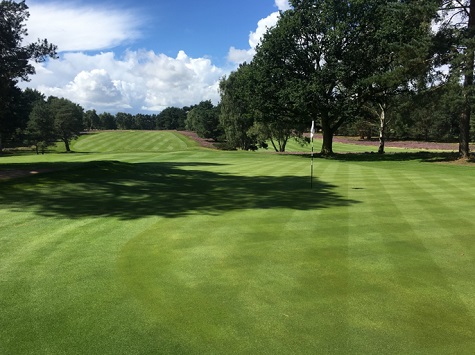
Although the government announced a timetable for the return to sport, there have been no real detail on time frames and restrictions on when full contact sport can be played again. No doubt there will be a lot of information filtering down via the specific sporting bodies (RFU, FA, LTA, R&A RFL ECB and Bowls England) in the coming weeks. I should imagine it will start with some non-contact training sessions at clubs and then gradually over a few weeks will finally get back to some competitive sport.
This will all mean a busy time for turf professionals, having to prepare for a cross section of winter and summer sports, that may overlap the traditional seasons. We may find some cricket facilities having to share with football etc, and then we may find the cricket season being prolonged.
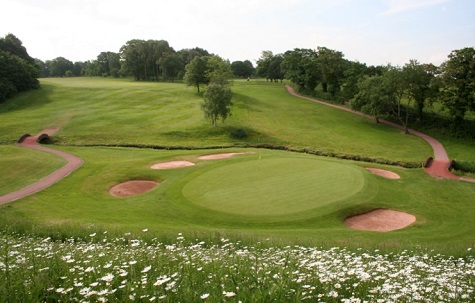
Many golf clubs have continued to invest and keep greenkeeping teams working throughout the pandemic, although many have been on reduced shift working patterns. In the main though, golf courses have worked hard to prepare their courses for their reopening – especially important, as I’m hearing on the grapevine just how popular a pastime it is going to be in the coming months.
On the subject of sport, this week’s Viewpoint article is about the realistic maintenance costs incurred for a grassroots facility. For far too long we have undervalued the role of the groundsmen and the work they do in maintaining grass roots facilities.
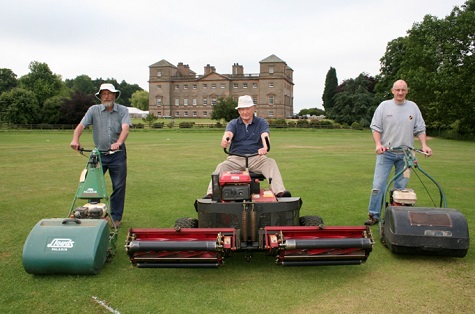
There is an undeniable cost to bear for the upkeep of our sports facilities. I am sure this article will be a good read and create some healthy debate on the matter, hopefully inspiring clubs to invest more money to improve their playing surfaces = especially following this pandemic when there will be a definite upsurge in activity and people taking up community sport again.
Carbon neutral targets
As for other news, I read with interest there are many organisations and people starting to talk up the need to meet carbon neutral targets in the coming years. With the fact this pandemic has highlighted the importance of green spaces, there will be some interesting conversations to be had and the results of planting schemes to be seen, designed to enhance our society, in the coming years.
One interesting example is Nottingham that could become the first carbon neutral city in the UK after the City Council set itself an ambitious target to achieve this by 2028.
A green vision for a huge chunk of Nottingham city centre has been drawn up – which would see the Broadmarsh shopping centre replaced with parks and space for small businesses in eco-friendly buildings. The Green Party and Liberal Democrats have joined the debate over what should happen to the shopping centre site following the collapse of previous operators, intu, and the return of its lease to Nottingham City Council.
Nottinghamshire Wildlife Trust has also developed a bold vision in which the site would be turned into a nature area. The council is holding what it calls a “big conversation” about what should happen with the currently partially-demolished site, and has said it is open to hearing all options.
I am sure other cities will be following suit in the coming years and there will be plenty of work opportunities to raise the profile of parks professionals.
Wildflower Strategies
I wonder how many local authorities currently have a Wildflower Strategy or are in the process of developing one? A recent APSE survey and report gave some interesting feedback on this subject.
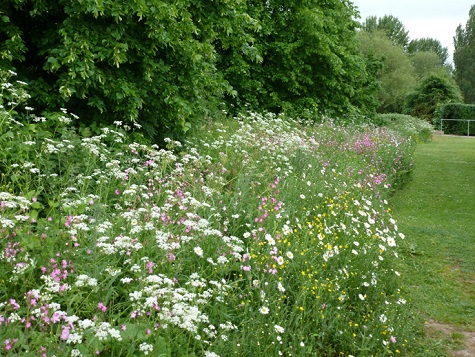
The planting of wildflower mixes in urban green spaces has become quite popular in recent years, with many councils now replacing regular mown grass verges and island sites with wildflower displays.
There has been a reduction in wildflower meadows by over 97% since the 1930s of roughly 3 million hectares. It has been reported that there could be as little as 10,500 hectares of lowland wildflower meadow and 900 hectares of upland hay meadow left in the UK. Their existence is important, as meadows can contain up to 40 species per square metre as well as supporting pollinating insects, mitigate flooding and can capture large amounts of carbon. With a growing focus on climate emergency declarations, establishment of council carbon management programmes, the widespread decline in pollinating insects in the UK, and growing public acceptance for alternatives to traditional Council green space management, the arguments for establishing more wildflower meadows have rarely been more prevalent in local authority discussions.
With many council services being suspended to mitigate the effects of the pandemic, grassland across the country has been allowed to grow wild to an extent that has not been seen in years. Also seed companies recently, have developed a wide range of floral wildflower seed mixes that can cater for many different and variable locations.
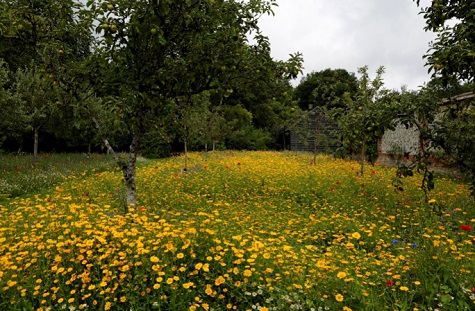
Plymouth City Council for example, have created 120 wildflower meadow sites in the area since 2012 with help through funding from organisations such as The National Lottery Heritage Fund, Peoples Postcode Lottery and Biffa. Their meadows are managed with a single annual cut between late summer and the beginning of autumn, with many volunteers involved in the planting wildflower plug plants and flowering bulbs. Their website also features a map of site locations, and over 30 description pages that highlight the location of the wildflower meadows.
The Council’s green estates manager was part of a recent interview on the council website where he stated that “before the coronavirus pandemic, we were planning to trial leaving a few verges and boundaries in certain areas of the city to grow wilder...we expected petrol savings, more insects, more wildflowers and staff able to prioritise work in parks...but then along came COVID-19 and with it a number of factors which mean we’ve decided to roll the scheme out a little further”. They intend to have more wildflowers growing on verges and banks alongside roads. See video here.
Swansea Council meanwhile, began with a trial scheme in 2012 and now has over 180 wildflower sites across the city including roundabouts, roadside verges, parks and prominent landmarks, with more than 41,000 square metres of wildflowers. After many years of the initiatives, their parks and cleansing service uses their experience to determine which types of wildflowers work best in different areas. The program is funded by the council, community councils and local ward members. The popularity of the scheme with local residents means that the council regularly get enquiries from the public about how they can buy the seed mixtures for their own gardens. The council now works in partnership with Friends of the Botanical Gardens who sell the seed mixtures at their plant sale events in Swansea.
From my own experiences of being a Green Flag Awards judge, many parks are increasing their commitment and now investing and introducing a range of wildflower plantings with the aim to improve the aesthetics and biodiversity of their land assets.
If the current government road map to recovery stays on track, come July we should be able to start enjoying life again and be out and about enjoying the many delights our public parks and sports clubs can offer.
 |
|
 |  |
340,000 YOUNG PEOPLE WONT BE ABLE TO PLAY SPORT IN NEXT 5 YEARS
Unless we get a new generation of groundstaff, say GMA
In our first WEB ONLY story, launching the first annual GroundsWeek today, the Grounds Management Association calls on sports fans to recognise the importance of grounds staff and volunteers and urges more people to join the sector.
GOLF GREENKEEPERS ASK FOR SUPPORT
As timetable set for sport’s return
In our next WEB ONLY story, BIGGA has welcomed the Prime Minister’s announcement regarding the timetable for the reopening of golf.
27 CEREMONIES FOR JOHN DEERE GRADUATES
Apprentices celebrated remotely at dealerships
A total of 27 young service technicians have formally graduated from the latest John Deere Ag Tech, Parts Tech and Turf Tech advanced apprenticeship programmes.
A total of 27 young service technicians have formally graduated from the latest John Deere Ag Tech, Parts Tech and Turf Tech advanced apprenticeship programmes, which are run in partnership with national training provider ProVQ (see below for full details).
With no prospect of holding the traditional graduation ceremony in 2020 attended by the students, their parents and dealer representatives, John Deere’s training team came up with an alternative plan. Each graduate had their own individual ceremony at their employing dealership, where they were presented with a specially created hamper and their graduation certificate.
As well as the hamper there were additional prizes awarded to four top apprentices. The Tech Apprentice of the Year award went to Matthew McPherson from John Deere Forestry, Carlisle who received a crystal plaque and an iPad.
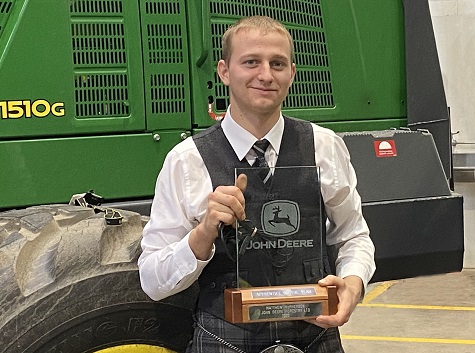
Matthew McPherson, Tech Apprentice of the Year
The runners-up were William Anderson of J&S Montgomery, Beith and William Smith of Tallis Amos Group, Bibury, who each received high street vouchers worth £250.
Parts Tech Apprentice of the Year was awarded to Corey Pilcher from Farol, Midhurst, who received a crystal plaque and an iPad.
These annual awards are based on the trainees’ consistently high standards of work, both at their dealerships and at the training centre, over the three years of the apprenticeship.
“Successfully completing an apprenticeship is an achievement that deserves proper recognition and we were determined that these graduates should not miss out,” says John Deere Limited training centre manager Allan Cochran.
“Once we settled on hampers we decided to make up these special prizes ourselves. Sourcing produce near to our Langar headquarters enabled us to help support local businesses during the pandemic. We used the John Deere overnight parts distribution network to deliver the hampers and certificates to the sponsoring dealers, so that all the graduates could be presented with their awards on the same day.”
Tech Apprentice of the Year Matthew McPherson was the first trainee from John Deere Forestry to join the apprenticeship scheme in 2016. A combination of workshop and in-the-field training enabled Matthew to progress very quickly to the role of field service engineer, a position he has held since 2018.
John Deere’s three-year Ag Tech and Turf Tech and two-year Parts Tech apprenticeships involve students being trained in engineering, electronics, hydraulics, diagnostics, communication skills, computing, sales and marketing. The programmes lead to IMI Level 2 & 3 Diplomas in Landbased Engineering and Vehicle Parts Competence, and registration at LTA Intermediate level in the industry’s Landbased Training Accreditation scheme.
In subsequent years qualified technicians undergo further education and adult training within the John Deere University programme, on a career path that can ultimately lead to the highest possible LTA Master Technician accreditation.
New student intakes are in September each year; apprentices need to be resident in the UK, sponsored by a John Deere dealer and aged 16 or over. The standard programmes include on-the-job training and assessment as well as eight weeks each year at the John Deere Apprentice Training Centre, when possible. Further details of the various programmes can be found here.
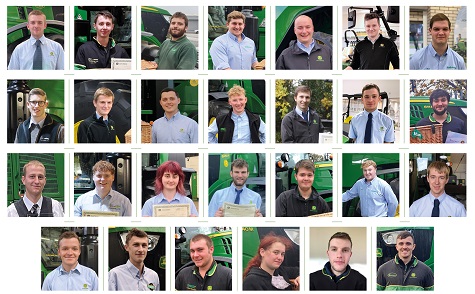
Top row, left to right
- William Anderson, J&S Montgomery, Beith, Ag Tech Apprentice runner-up
- Ryan Bird, P Tuckwell, Great Dunmow, Ag Tech
- Oliver Blackwell, Ripon Farm Services, Keighley, Parts Tech
- Louis Cooper, Ben Burgess, Beeston, Ag Tech
- Harry Donaldson, Thomas Sherriff, Haddington, Ag Tech
- Kai Emerson, MacGregor Industrial Supplies, Inverness, Parts Tech
- Nick Garrod, Ben Burgess, Coates, Parts Tech
Second row, left to right
- Edward Green, P Tuckwell, Maulden, Ag Tech
- Luke Haggaty, Hunt Forest Group, Tilshead, Ag Tech
- Jake Hillier, Hunt Forest Group, Chilbolton, Ag Tech
- Tom Hunter, Rea Valley Tractors, Sudbury, Ag Tech
- Samuel Johns, Cornwall Farm Machinery, Ludgvan, Ag Tech
- Nathanael Kendall, Balmers GM Ltd, Burnley, Turf Tech
- Adam Leckenby, Ripon Farm Services, Malton, Ag Tech
Third row, left to right
- Matthew McPherson, John Deere Forestry, Carlisle, Ag Tech Apprentice of the Year
- Warren Matthews, P Tuckwell, Maulden, Parts Tech
- Zoe Parker, Doubleday, King’s Lynn, Ag Tech
- Fraser Paton, Netherton Tractors, Turriff, Ag Tech
- Corey Pilcher, Farol, Midhurst, Parts Tech Apprentice of the Year
- Sean Rickwood, Ben Burgess, Newmarket, Ag Tech
- William Smith, Tallis Amos Group, Bibury, Ag Tech Apprentice Runner-up
Bottom row, left to right
- Harvey Spells, Ben Burgess, Aylsham, Ag Tech
- Jake Stacey, Smallridge Bros Ltd, Callington, Parts Tech
- Callum Stanton, Farol, Midhurst, Ag Tech
- Jasmine Thackray, Ripon Farm Services, Ripon, Parts Tech
- Tom Wagg, Ben Burgess, Norwich, Ag Tech
- Garry Young, Thomas Sherriff, Stow, Ag Tech
 |  |
CLUB CAR CHOOSE CAMPEY
New UK distribution partner
Club Car has appointed Campey Turf Care Systems as a UK dealer for its commercial range.
Club Car has appointed Campey Turf Care Systems as a UK dealer for its commercial range.
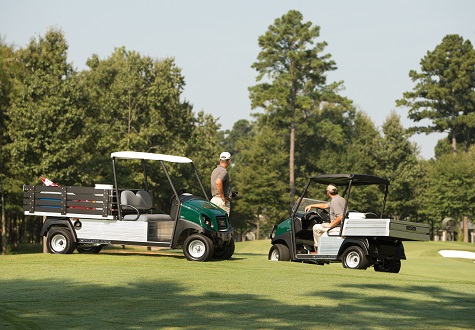
Andy Bourke, Club Car’s regional manager UK&I & Nordics, says that Campeys have "..built an excellent reputation not only for supplying innovative and reliable turf care products but also having strong customer relationships and superb aftersales service.
“We see this as an exciting partnership that will allow us to continue to deliver value to our customers and accelerate growth in the UK. We look forward to a long and successful relationship with Campey Turf Care Systems.”
Lee Morgado, director of Campey Turf Care Systems, said, “Club Car brings a natural synergy with our existing product lines and we look forward to working closely with them to develop the current customer base and grow the UK market."
ETESIA APPOINT NEW DEALER
In the Scottish Borders
With immediate effect, the Etesia range will be available from Border Chainsaw and Lawnmower Services throughout the Lothians and the Scottish Borders.
Etesia UK have welcomed Border Chainsaw and Lawnmower Services to its dealer network.
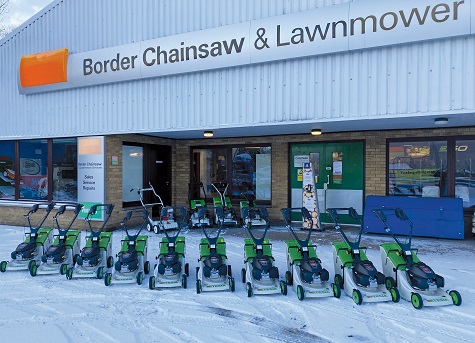
Based in Earlston, Scotland, the dealership was founded in 1974 by the Cowe family. The business stayed within the family until January 2019 when it was acquired by Pearsons of Duns Ltd.
It was at this point that the experienced Allen Whellans was appointed as groundcare division manager in a bid to increase the company’s commercial offering.
“In a previous role, I worked with dealers and end-users who had a large fleet of Etesia pedestrian mowers. They always commented on how good they were.” he said. “It is that knowledge of knowing what the mowers are capable of doing that confirmed that I wanted to work with Etesia.”
Allen continued, “Etesia is very much focused on working with dealers as opposed to online discounting. Customers want support and back-up; they want to be able to speak to someone and they want to demo the mowers.
"Border Chainsaw and Lawnmower Services and Etesia have the same ethos - we want to work together for the customer – and that is the sort of partnership we are looking for.”
With immediate effect, the range of Etesia pedestrian mowers will be available from the dealership throughout the Lothians and the Scottish Borders.
“The Borders are lush areas and there is always lots of thick wet grass," said Allen. "The fact that that operators can get out and cut in all conditions, even in the rain, is going to be fantastic for our customers.
“These Etesia mowers just go that extra mile and therefore I am confident that they are going to significantly grow our attraction to commercial customers.”
 |  |
LISTER WILDER PARTNER WITH BOMFORD TURNER
Supplying machines from all depots
New collaboration follows Lister Wilder's recent announcement of their full-line Kubota business.
It has been announced that Lister Wilder have signed an agreement with Bomford Turner to supply machines throughout all their depots.
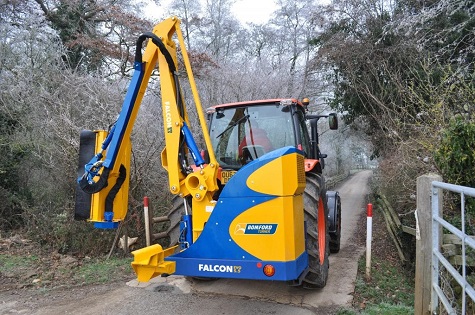
This new collaboration follows on from Lister Wilder's recent announcement of their full-line Kubota business.
Phill Hughes, sales director at Lister Wilder said, “The Bomford Turner name is well known through the agricultural industry and a 'go to' brand for many
farming customers. Their reach mower manufacturing dates back to the 1940s, which happens to be the same decade that our business was formed! Add to that their dedication to customer support and our two companies really do share aligned values and history.
"This partnership is a great addition to our machinery line up, and will undoubtedly benefit our customers as we look to the future."
EUROMEC SIGN HONDA SUPPLY DEAL
For range of equipment
The Market Harborough-based company is expanding its product range after signing a new supply deal with Honda.
Euromec, the Market Harborough-based supplier of industrial cleaning and ground maintenance equipment, is expanding its product range after signing a new supply deal with Honda.
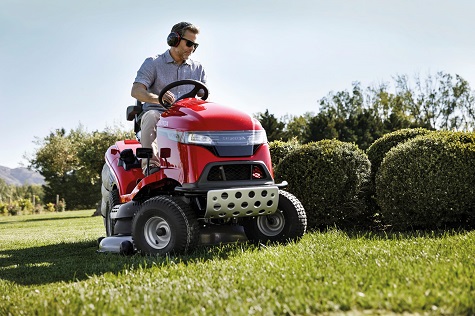
The deal will see Euromec become a supplier for some of Honda UK’s lawnmowers, tractors, and robotic mowers, as well a range of accessories including brushcutters, tillers, blowers and hedgetrimmers.
Peter Crewe, chairman of Euromec said, “We are delighted to have secured this new deal with Honda. It takes Euromec’s ground maintenance capabilities to a whole new level and ensures our customers can choose from an exciting range of quality machines."
Machines that Euromec say they will be supplying include the HF 2417 tractor, the larger HF 2625 tractor, the latest Izy models and a range of core push and self-propelled lawnmowers.
“Whatever, the requirement, customers can be assured we have the right Honda machine for their needs,” added Peter. “We’re very excited about this deal and we think our customers will be as well.”
This appointment by Honda UK follows the manufacturer cutting around a quarter of their network last year.
 |
|
 |  |
ADVERTISE YOUR JOBS HERE
Amazing success rates!
Advertise your recruitment needs on TurfPro Weekly Briefing and reach our targeted audience of recipients every week.
Contact Nikki Harrison for details - 01491 837117
|
 |  |
TAKING THE STRESS OUT OF WEED CONTROL
With pre-emergence controls
Lewis Blois, national account manager at Bayer, recommends that stress can be alleviated, and weeds can be prevented from developing, with an integrated control programme that focuses on pre-emergence weed control.
Weeds can be incredibly costly and stressful to control. However, Lewis Blois, national account manager at Bayer, recommends that this stress can be alleviated, and weeds can be prevented from developing, with an integrated control programme that focuses on pre-emergence weed control.
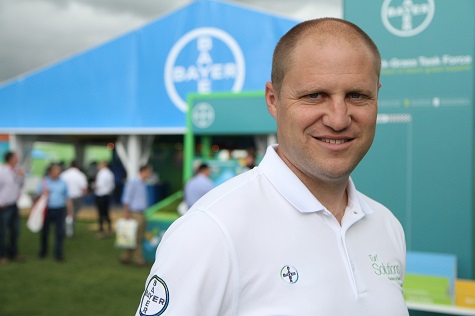
Lewis Blois, national account manager at Bayer
“The key to efficiently tackling weeds is to target them early, as overgrown weeds are much harder to knock down,” says Lewis
“By using a pre-emergence residual herbicide such as Valdor® Flex, a broad spectrum of weeds can be controlled effectively, for up to four months, with some users reporting over 5 months control,” says Lewis.
“Applications of pre-emergence herbicides should be made as soon as possible, in the early spring when temperatures start to rise but this timing can vary regionally,” advises Lewis.
He adds that Valdor® Flex should be mixed with water and applied all year round but only one application per site should be made per year.
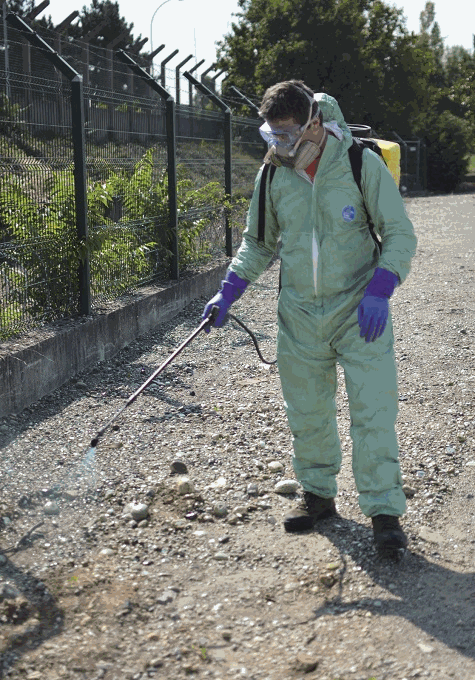
Pre-emergence weed control
“Reading the label is essential to get the best results, as this will advise on the target weeds, application timing and treatment rate,” explains Lewis.
“It is also very important to think about resistance management, which is becoming an issue due to the repeated use of active ingredients from the same herbicide group,” says Lewis.
Valdor® Flex contains the active ingredients iodosulfuron and diflufenican which are from different active groups. This is important for weed resistance management and will help to break the cycle of using the same active ingredient for residual weed control.

Valdor Flex
“With pre-emergence herbicides, a reduced amount of chemical input will be needed throughout the entire growing season compared to only treating weeds once they have emerged,” says Lewis.
As well as herbicides, pre-emergence cultural controls should be considered in the early spring. “While they’re not always successful at offering long lasting control compared to residual herbicides, they contribute to the activity of chemical controls.
“Weeds can be incredibly frustrating to control, but pre-emergence herbicides can provide a reliable solution to the issue and deliver efficient control of weeds,” Lewis adds.
 |  |
STIHL LAUNCHES SERVICE KITS
For petrol tools
STIHL has launched a range of service kits for petrol handheld tools that enable professional and domestic owners to carry out simple routine engine maintenance themselves, increasing their tools reliability and longevity.
STIHL has launched a range of service kits for petrol handheld tools that enable professional and domestic owners to carry out simple routine engine maintenance themselves, increasing their tools reliability and longevity.
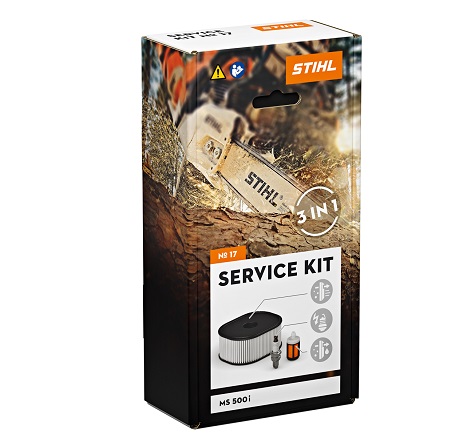
Developed by STIHL to make routine maintenance quicker and easier, the new service kits allow owners to maintain the optimum performance and reliability they expect from STIHL products.
STIHL's service kits contain everything needed to carry out routine servicing on a STIHL petrol hand held power tool engine. The service kits include an air filter, spark plug and fuel filter, and additional items depending on the specific machine. The kits also come with a QR code and short URL so users can quickly access how-to videos to give them step-by-step instructions for replacing the air filter, spark plug and fuel filter.
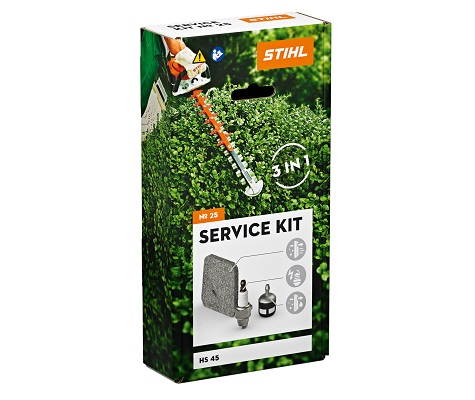
23 variants of service kit are available, covering the most popular STIHL petrol chainsaws, brushcutters, blowers, pole pruners, hedge trimmers, cut off saws and earth augers. In addition to professional and domestics users, the new service kits can also be used in-store by STIHL approved dealers, making the process of ordering and carrying out a service quicker and more cost-effective.
For more information on STIHL's new service kits, please visit www.stihl.co.uk.
 |  |
NOW AVAILABLE FROM TYRE-LINE – THE NEW CARLISE VERSA TURF RANGE
The Turf Friendly Groundscare Tyre, With The Traction Of An Ag Tyre.
Using the latest design technology, the new Versa Turf range of tyres boasts a list of advanced features and a unique pattern design that is gentle to the turf but aggressive enough to maximise traction.
American specialist tyre brand Carlisle, is one of the most popular and respected brands in the Groundscare market. With O.E. fitments on famous names such as John Deere, Ariens, Ferris, Logic and many others, it is clear to see why so many users continue to fit Carlisle tyres for their replacement and aftermarket needs.

With an ever-expanding product range and sizes starting at just 4” rim size, Carlisle’s Groundscare tyre range boasts well known pattern names including Turf Master, Multi Trac C/S, Turf Smart, Turf Trac R/S, Links, Fast Trax, Turf Saver and Ultra Trac to name but a few. And now, Carlisle have introduced the next generation of specialist Groundscare tyre – The Versa Turf.

Using the latest design technology, the new Versa Turf range of tyres boasts a list of advanced features and a unique pattern design that is gentle to the turf but aggressive enough to maximise traction. With a radial construction for excellent flotation, rounded shoulders to minimise turf damage when turning and a self-cleaning tread pattern with 60% deeper tread depth than standard R3 turf tyres, the Versa Turf is the perfect blend of R1 Agri traction pattern but with the turf protection characteristics of an R3 Groundscare tyre. Available in sizes 215/50R10 (18x8.50R10), 220/65R12 (23x8.50R12), 300/50R12 (24x12.00R12), 305/60R12 (26x12.00R12) & 305/70R16.5 (12R16.5) all with “E” marking for full road homologation.
The new Versa Turf range of tyres, along with the complete Carlisle range of tyres, wheels and accessories are available from UK Official Carlisle Distributor Tyre-Line. Contact the Tyre-Line Aftermarket team today for more info or to see how they can help you with your ATV/UTV tyre requirements and how to apply for their B2B ordering system – 01458 250350 aftermarket@tyreline.com
 |
|
 |  |
EDITOR'S BLOG ARCHIVE
Catch up with Laurence Gale's recent blogs
Want to catch up with one of editor Laurence Gale's blogs? Here is the place to do so.
TURFPRO FEATURE ARCHIVE
Find our previous features here
If you want to catch up with any of TurfPro's previous features, here is the place to do so.
THE INDUSTRY WILL CHANGE & ADAPT
But it will survive
WIRRAL GOLF COURSES SAVED
Renewed hope and optimism for the future
GREEN SPACE CONTRIBUTION TO WELLBEING IS UNDERVALUED
Parks invisible on national agenda
A SHINING LIGHT IN IRELAND'S SUNNY SOUTHEAST
Wexford Golf Club
GREEN SPACES DO NOT LOOK AFTER THEMSELVES!
Keith Kent says we must invest in people
WE SHOULD TELL THE WORLD ABOUT THE UK INDUSTRY
Right time for all sides to come together
SOIL LIFE IS PRECIOUS
Good-quality soil can help save the planet
MORE THAN JUST CUTTING GRASS
Encouraging the next generation
A BUZZ FROM DOING THE JOB
Wide experience of the turf grass industry
PAYING THEIR WAY
Low wages is the bane of the industry
AMENITY MANAGEMENT IMPACTS US ALL
Professor John Moverley
CARING FOR PARKS OF ALL TYPES
Mary Worrall
TOP FIVE FRUSTRATIONS FOR CRICKET GROUNDSMEN
What causes you the most frustration in your role?
PROFESSIONALS AT THE CUTTING EDGE
Vic Demain and Phil Sharples
BOWLS CLUBS IN PERIL
A sad decline
A VERY SPECIAL INDUSTRY
Loz looks back
SNEAK PEAK AT A ROBOTIC "GAME CHANGER"
Commercial model capable of covering 50,000 m2 teased
HALESOWEN PICK A BIG ROBOT UP FRONT
Invest in mowers
COMPRESSED AERATION
The new way
PARKS MATTER MORE THAN EVER
Recent sector developments
ON TEST
STIHL blowers
THREE CORE VALUES TO SHAPE OUR INDUSTRY
Real concerns for the future
ENGLAND'S GREEN SPACE GAP
A split along racial lines
ON TEST
EGO STX3800 strimmer with RTX2300 Rotocut head
A SECTOR FACING IMPORTANT TIMES
Review of the National Action Plan
PARKS MATTER
The role of public parks in the recovery: a discussion paper
A UNIQUE SPORTING VENUE
Wormsley private estate
A BTME OUTDOORS?
A good bet for the industry
PARKS NEED APPROPRIATE POLITICAL REPRESENTATION
Q&A with Philippa Reece, Parks and Foreshore Manager at Adur and Worthing Council
CRICKET LOAM
What does it mean?
A HERCULEAN EFFORT TO GET PARKS BACK TO NORMAL
Q&A with Chris Worman, Rugby Borough Council’s parks and ground manager
ON TEST
STIHL battery products
TURFGRASS STRESS MANAGEMENT
Reactive Oxygen Species (ROS) and antioxidants during biotic and abiotic stress in turfgrass plants
AUTUMN DISEASE MANAGEMENT
The coming months are going to prove very difficult
THE ABUSE OF PARKS . .
Is the abuse of society
WHY PARKS MATTER?
A statement from the Parks Management Forum to the Prime Minister
THE 21st CENTURY PARKS MANAGER
Innovative, creative and entrepreneurial
EAT, SLEEP, CUT, REPEAT!
Cricket under covid
TIME FOR A SINGLE SHOW?
Debate brought back into focus
A CHALLENGING TWO MONTHS
Running golf design projects from home
PRESSURE SITUATION
Cementing the reputation
A CLUB TO BE PROUD OF
10 years at the helm of Olton GC
GAME CHANGERS IN TURFCARE
The day the Lord's outfield reconstruction proved its worth
THE ESSENCE OF ESSENTIAL
Finding a sensible way forward on defining "essential maintenance"
THAT WAS THE YEAR THAT WAS
2001
HOW TO LOOK AFTER A GOLF COURSE WITH NO GOLFERS
Fundamental to the survival of almost all courses, if not of the game itself
RAIN STOPPED PLAY WOULD BE WELCOME
. . along with ‘lunch is being taken early’
PHYSICAL CONTROL OF TURFGRASS PESTS
An urgent problem
A DIVERSE & ENTERTAINING WEEK
Successful BTME 2020
INTEGRATED PEST CONTROL
Opportunity to embrace new methods
ENVILLE ON THE UP
Major investments taking place
GREEN FLAG AWARDS 2019
A great success
U.S PROFESSIONAL EQUIPMENT SHOW EXCELS
Buoyant GIE+EXPO
LEGACY OF THE SOLHEIM CUP
At Gleneagles
A DAY OUT WITH THE LADIES
Behind the scenes at the Solheim Cup
COVENTRY UNIVERSITY'S EDIBLE GARDEN SUCCESS
2006 - present
HAIL THE GRASS MASTERS!
Boorish media comments about pitch quality are wide of the mark
CONTRACTOR SEES MULTI-DISCIPLINE SUCCESS
360 Ground Care serving professional facilities
BUSY TIMES
Judging the Green Flag Awards
TAKING AN INTEGRATED APPROACH
What does it all mean in managing turf surfaces?
UNDER PRESSURE
Dry weather conditions continue to keep turf managers focused on moisture management
EDDIE SEAWARD
Death of Wimbledon’s influential grounds manager
MAJOR NEW IRRIGATION PROJECT
At Top 100 classic Berkhamsted Golf Club
NEW HORIZONS FOR THE HATTERS
Investment paying off at Kenilworth Road
ELIZABETHAN RESTORATION
At Castle Bromwich Hall Gardens
WHAT IS BIOPHILIA?
The vital impact of parks and green spaces on health and well-being
WORM CONTROL
Without carbendazim
THE TRUE COST OF PETROL
Battery-powered outdoor power tools are now turning the heads of professionals
SANDS OF TIME
Sand-based pitches are now the norm in professional sports
WHY DO WE DO THE RIGHT THING?
We must maintain industry standards
CHASING GRASS PERFECTION?
11 things you need to know . . .
MAINTAINING STANDARDS
Q&A with BASIS ceo, Stephen Jacobs
STRI RESEARCH DAY 2018
Hosted at research trial grounds in Bingley
THE MECHANIC
Leicester City FC invest in new role
LORD'S 'GRASS-GUVNOR' TO RETIRE
Mick Hunt bows out after 49 years
HOLLOW CORING & DEEP SCARIFICATION
Is it really necessary?
 |
|
 |  |
 |  |
 |  |
 |  |
IDENTIFYING THE TRUE VALUES
Of grounds maintenance
by Laurence Gale, TurfPro editor
I have spent some time lately, looking at the current state of our industry in terms of the maintenance costs of our natural turf facilities.
With lockdown still curtailing the opportunity for myself to get out and about in recent weeks, I have refocussed my time looking at the current state of our industry in terms of the maintenance costs of our natural turf facilities.
If you Google this information you tend to get a plethora of answers, which I find quite disturbing as many are extremely far from the reality of the true costs incurred maintaining a sports facility.
This is often made difficult by the sheer number of variables and the lack of understanding of what is required when managing and maintaining a given playing surface.
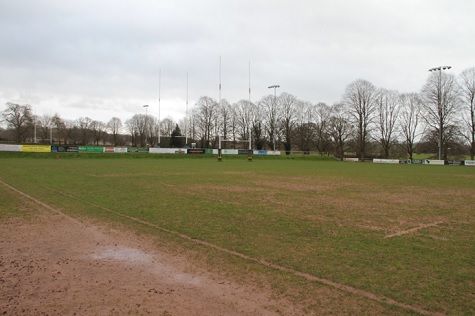
These variables are usually associated with the level of sport being played, the desired level of provision and the detailed level of inputs and maintenance operations that need to take place.
We must also take into consideration its expected level of usage, current condition, and problems it may well have in terms of surface drainage porosity and sward composition.
These costs will also be dictated by the way the work may be carried out, whether it is done in-house, by volunteers, by contractors or by paid employees?
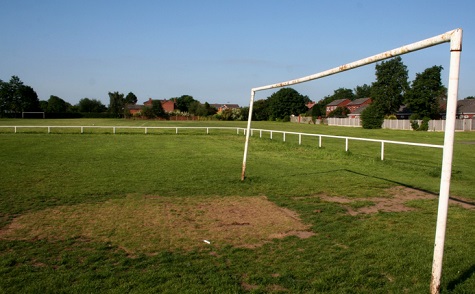
In most cases the level of budget being put aside for general maintenance of grassroots-level playing facilities tend to be way off the mark. One of the reasons for this is often the lack of understanding of groundsmanship and what is required in terms of inputs and resources that are necessary for the maintenance of their facility. No two sites are the same. Each have their own unique set of requirements and maintenance needs and inputs to either maintain its status or additional work to bring it up to standard.
Far too often, many clubs tend to do the bare minimum which can result in a basic set of maintenance inputs generally seen as, mowing, feeding, marking out and some minor repairs when warranted. Quite often they also skimp on end of season renovations, which over time leads to a deteriorating playing surface.
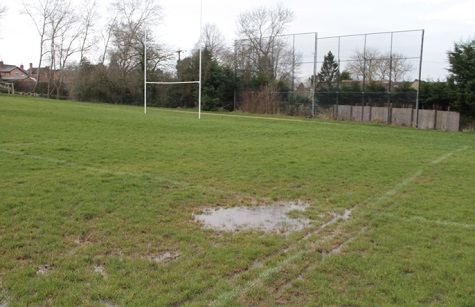
I firmly believe if clubs actually recognised the true costs and inputs required to maintain their pitch and produced a business plan to set to facilitate a way of securing the budgets to run the club, we would then start to see an improvement in club facilities and an increased level of sport participation.
Over the years I have written numerous articles on the subject along with contributing a regular monthly sports facility diary update. A recent article considered the need to get clubs to find the funds to invest in their pitches.
My Viewpoint article today is based on the fact we need to promote and be more aware of the potential costs required to maintain a range of sports facilities.
Having spoken to a number of groundsmen, it was felt the best way to estimate the annual maintenance costs for each sport was to put together a maintenance calendar for each and attribute the inputs undertaken and record the time taken for each basic maintenance operation - for example, grass cutting, feeding, aeration, weed control, fungicide treatments pre and post-match operations and renovations.
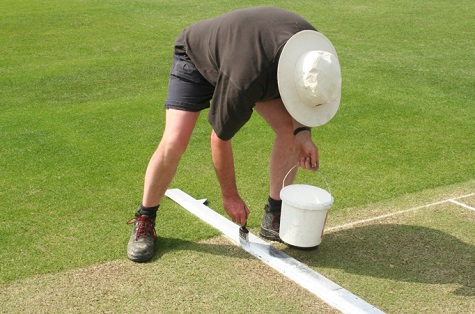
Overall, it was not surprising to see how much time is required to maintain a facility.
So for each sport, these are my findings based on a grassroots level of provision based on one single pitch facility :-
Football / Rugby
I based both rugby and football costs on a similar maintenance regime - essentially a weekly cutting programme during the growing season, using a compact tractor and roller mower, feeding programme, aeration work, marking out, strimming, pre and post-match activities, harrowing and a decent end of season renovation that includes overseeding, topdressing with 100 tonne of sand and an application of fertiliser.
In total the man hours for one person attributed to carrying out this work throughout a calendar year, equated to around 362 hours of manual work. A full end of season renovation cost would be in the region of £6000 and allowing a further £2000 for the cost of materials and servicing.
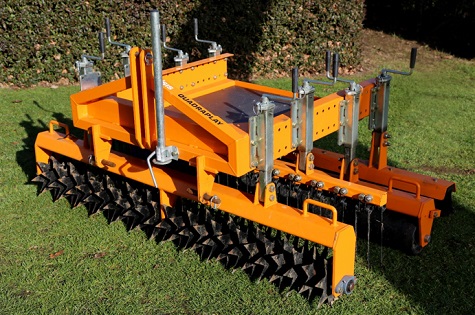
These figures are without the initial cost of the machinery you require for undertaking this work yourselves. In total the investment in tractors, mowers, and other essential equipment, line markers, outfield spikers etc, may cost the club in excess of £30,000 to buy.
Capital costs and replacement costs will need to be accounted for somewhere in the budgetary figures so that you are able to maintain and keep your machinery running. Today there are many types of finance deals available to secure machinery and equipment.
So, if you are in a position of being able to use volunteers your annual costs would still be in the region, considering the costs of materials / machinery servicing costs, of around £8000.
If you then look at the man hours, we equated to be 362 hours allocated to undertaking the work required to maintain your pitch, hourly charges for specific works can vary between £20-£50 per hour - therefore if we were to set a commercial rate of £30 per hour labour rate against these figures ( £30 x 362 hours), we would be now looking at a set value of work of around £10860 .
Therefore, employing someone or using a contractor to undertake the work with the cost of materials. The total annual cost for maintaining a grass roots rugby / football pitch would be near to £18860.
There will be some flexibility in these figures if you were able to scale up the amount of pitches you maintain, but in essence we should be looking at a future investment of around £20,000 per pitch.
Bowls
As for bowls, undertaking the same formular, working out the hours invested in time to maintain a bowling green, cutting three times a week and undertaking other relevant work, feeding, scarifying, verticutting and end of season renovations we came to a figure of 258 hours with end of season renovations, material and servicing costs being £3500.
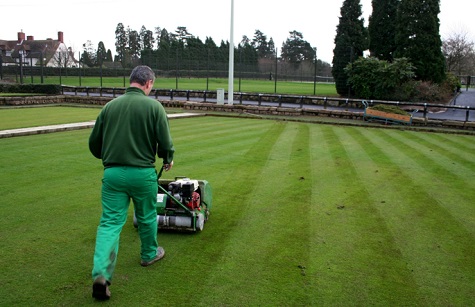
Therefore again, if you were to have a volunteer workforce and needed to cover the costs for machinery and materials you could be looking at a total annual cost of £3500 per green.
However, if you must pay for the services of a paid greenkeeper / contractor to undertake the maintenance work at a low rate of £30 per hour, then the total annual labour maintenance cost would be 258 x £30 = £7740.
Therefore total annual cost including labour and materials would be around £11420. Allowing for some unforeseen works etc we are probably looking at a baseline figure of an investment of £12,000 per green - similar figure seen on this bowls website.
Cricket
As for cricket, we come up with some surprising figures. We broke the work down into five key working areas - work completed on the square, outfield, auxiliary works, ten-day wicket prep and renovations during a typical calendar year.
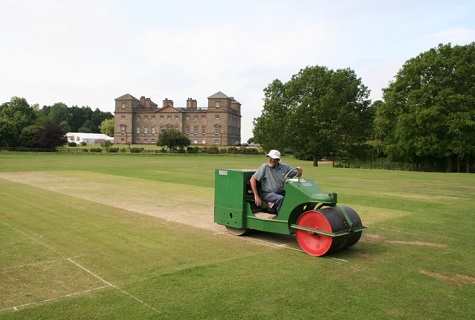
The following hours were attributed to each section:
- Square - this included pre-season rolling activities and maintaining square during the season 700 hours.
- Outfield - work associated with the outfield, mowing spiking feed etc 210 hours
- Auxiliary works - Moving covers, site screens, cutting hedges and other works 105 hours
- Ten-day preparation of wickets – preparing and repairing wickets 100 hours
- End of season Renovations – cut, scarify, aerate, seed and topdress with loam. 40 hours
Total hours incurred: 1155
Cost of materials: £3000

As for machinery, the clubs would need to be looking at an overall investment of £30,000 in machinery and equipment to undertake this work.
So, for a club with a strong volunteer group, the club would still need to allocate £3000 a year to pay for materials and machinery upkeep.
Again, using the same labour rate of £30 per hour to employ a groundsman / contractor to undertake the work we are looking at a cost of 1155 hours at £30 per hour = £34650
So, in reality we are looking at an investment of around £38,000 a year to maintain a twelve pitch premier standard cricket facility.
Realistic investments
These costs are an indication of the real investment of maintaining natural turf sport facilities. There will be possible savings and efficiencies when scaled up if you have more than one facility. But this investigation has shown when considering the skills training and regulations and work practices involved in maintaining a given sport facility, they come at a cost. And clubs should be more aware of these costs and plan accordingly and find the relevant levels of cash to maintain these excellent community sport facilities.
In my example I used a hourly rate of £30, a realistic rate in my opinion, for the services of a professional contractor / groundsperson who has all the relevant overheads, experience, insurances, machinery investment and taxes to pay on his earnings. Even if you reduce this hourly rate down to £20 per hour it still equates to the following annual maintenance costs for the above sports :-
- Football / rugby 362 hours =£7240 +£8000 = £15240
- Bowls 258 hours =£5160 +£3500 = £8660
- Cricket 1155 hours = £23100 +£3000 = £26100
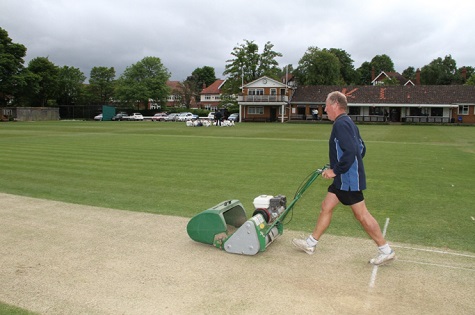
Clubs need to be charging a more realistic membership fee to help cover these costs associated with the maintenance of the facility. Given the cricket club’s annual figure of £38,000, if the club has 250 members that would equate to each member having to pay £152 per year to cover the maintenance costs.
For far too many years, sports clubs have not been charging members enough money to cover the cost of maintaining their facilities - bearing in mind if you or I were to join a fitness centre, we would be expected to pay £500 plus a year and still pay for drinks and food etc.
It is now time we started realising the true costs of providing good sporting facilities and begin investing for the future of these irreplaceable venues. I can see a massive uptake in sport and recreational pastimes once we get past this pandemic.
In my opinion you cannot put a value on the provision of sport in terms of the benefits gained over time for the members and local community who use these facilities. Let us hope, by June under the government’s roadmap to recovery, we will all be back playing and participating in sport.
 |
|
 |  |
FROM ACROSS THE IRISH SEA
|
A WELL POLISHED COURSE!
Ierne Social And Sports Club
by Alan Mahon, TurfPro's Ireland editor

Poland-born, Rafal Muzyk, the groundsman at Ierne Social and Sports Club, is tasked with looking after a unique club in the heart of Dublin’s fair city.
With a name like Rafal Muzyk one would correctly assume that this is not an Irish name. Rafal was born and raised in Krakow, Poland and he fell in love with Ireland after a visit there twenty years ago.
Rafal is the groundsman at Ierne Social and Sports Club, a very unique club in the heart of Dublin’s fair city. The Drumcondra club was formed in 1911, originally as a cricket club. Soccer was played there, but soccer and cricket have long since gone. In 1953 the pitch & putt course was built, and in 1997 a bowling green was added. The club also has three all weather tennis courts with floodlights, and it recently added two grass courts. It is planned to add another two courts in the future. These are just the outdoor facilities. Inside there is indoor bowls, snooker and a well equipped gym. This is a club where most of its members are retired people living around Dublin city. The club has around 550 members.
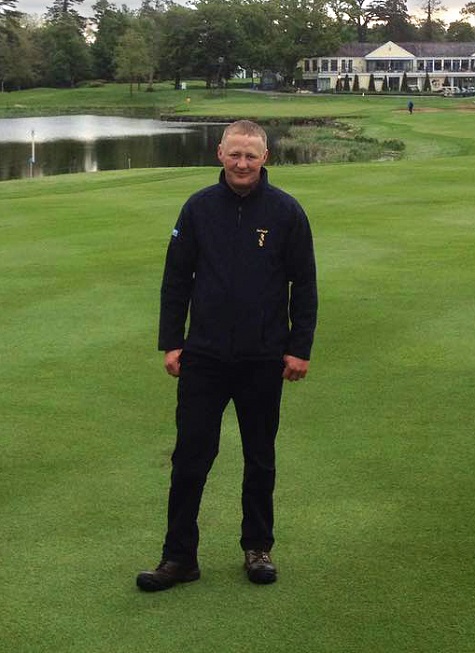
Rafal Muzyk
Rafal’s journey to becoming head groundsman at Ierne reveals a remarkable story. In 2001 he was studying horticulture at the University of Agriculture in Krakow in his native Poland. As part of his studies he was sent to Ireland on a six-week work placement to a vegetable farm in North Dublin. Rafal loved his time in Ireland so much that, instead of returning back to Poland to complete his horticultural studies, he decided to take a year off college and stay in Ireland. After the year was up Rafal returned to Krakow to finish his horticulture studies, and in 2004 he successfully obtained his Masters Degree in Horticulture.
The lure of returning to Ireland was very strong. He came back to the Emerald Isle soon after obtaining his degree. One day he was strolling along the beach at Portmarnock and saw Portmarnock Hotel and Links course. Wandering through the links he met Fintan Brennan who was (and still is) the course superintendent there. After a long chat, Fintan suggested that he apply for a job on the course. He applied, and soon afterwards he was called for an interview and got a job as a greenkeeper there. Rafal worked with Fintan for five years, gaining plenty of experience and knowledge.
In 2010 a vacancy arose to look after the maintenance of a sports club in Drumcondra, Dublin. This was Ierne Social and Sports Club and the person would be responsible for the maintenance of the bowling green, pitch & putt course and tennis courts. Rafal applied for the position and was successful. He has been managing the sports complex there ever since.
Pitch & putt course
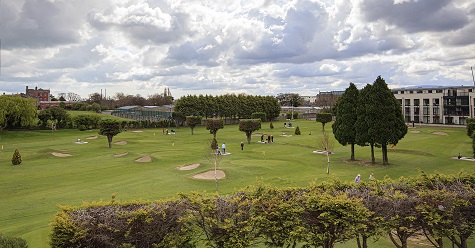
The 18 hole pitch & putt course at Ierne is a compact but tough course to play. Even though the longest hole is 63m, the greens are small, so accuracy is important as there are mounds and bunkers to avoid. The shortest hole measures 32m. Before the Covid-19 outbreak, as many as 1000 rounds of golf were played there every week during the summer months. As you can imagine this puts a lot of stress on the greens. Every Spring and Autumn Rafal hires a solid tiner to aerate the greens to help reduce compaction. At these times he applies a granular fertiliser to help the grass recover.
With a limited budget available, it makes more economic sense to hire some of the machinery for the course that is only going to be used once or twice a year. As well as hiring a solid tiner (Toro Pro Core 648), Rafal also hires a Vareedo seeder and an Air2G Aerator when needed.
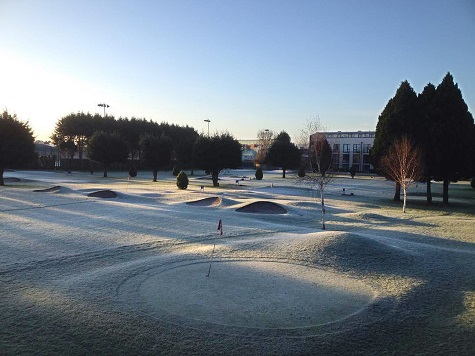
A frosty pitch & putt course
One of the most important products Rafal has in his chemical store is a growth regulator. He uses it not just to control the growth on the greens but he finds that it also helps with good root development. He noticed as well that, after overseeding, the new seedlings establish better on areas of heavy traffic when a growth regulator is applied.
Bowling green
There are very few bowling greens in Ireland. The vast majority of them are located in Dublin. The bowling green at Ierne covers 1400m and can facilitate up to six matches at a time. The members are delighted with how the bowling green has improved since Rafal started maintaining it eleven years ago. Maintaining bowling greens is similar to golf greens. You need to watch out for similar diseases, keep thatch under control and prevent annual meadow grass from taking over the sward. Some of the members of the bowling club help out with tasks on a voluntary basis such as hand weeding the green.
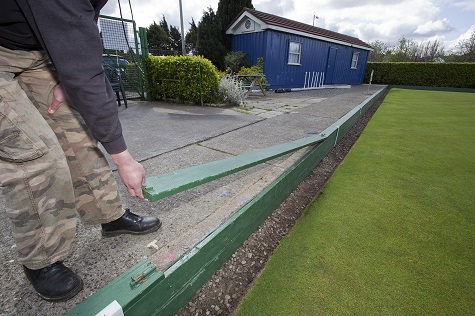
Part of the perimeter is removed for machinery access to the bowling green
The green is mown at 5mm during the summer and increases to 7mm in winter. Around 6 – 8 times during the growing season Rafal overseeds the green with slender creeping red fescue. On worn areas he uses ProNitro coated seed to help quick establishment. He also gives a light topdressing of sand. Scarifying, hollow coring and topdressing are carried out every Spring and Autumn.
Every year Rafal gets the soil tested on the greens. The feeding programme he uses is based on the results of this test. Organic granular fertiliser is applied to the greens 2 -3 times during the growing season, with liquid applications of biostimulants, seaweed, and wetting agents.
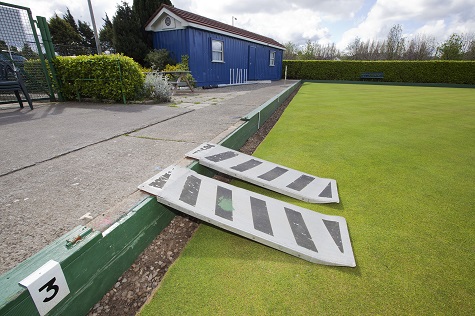
Ramps are placed for machines to drive over
Similar to the pitch & putt course, Rafal uses a growth regulator on the bowling green as well. He noticed that some members like to use the same end of the green for practicing and for playing matches. This causes some wear and tear so applying a growth regulator helps these worn areas to recover.
Machinery access to the bowling green involves lifting one of the perimeter boards and placing ramps from the path to the bowling green.
Four sprinkler heads are placed at the centre of each side of the green.
Volunteering
Ireland’s largest sports stadium, Croke Park Stadium, is only down the road from Ierne Social And Sports Club. Croke Park is the headquarters of the Gaelic Athletic Association (GAA). This is the place where GAA hurlers and footballers around Ireland dream of playing, especially in an All Ireland Final. Therefore one would be forgiven in thinking that, from a groundsman’s point of view, this would be a bit off putting for Rafal. On the contrary he saw this as an opportunity and for ten years was a regular volunteer at the stadium for big events, helping pitch manager, Stuart Wilson and his team. On important match days Rafal would have helped with the grounds maintenance before, during and after these big matches. Jobs he was tasked with included making sure the goal nets were secured properly; repairing divots during half time. He gained valuable knowledge and experience volunteering at Croke Park.
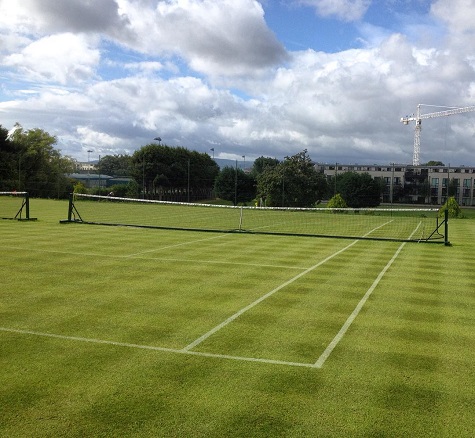
One of the lawn tennis courts
The lockdown effect
The lockdown has affected the club in many ways. The course is currently closed for play but in the summer of 2020, when restrictions were lifted, membership increased. The club saw a surge in membership as people wanted to avail of the outdoor facilities there. The location of the club helped with this increase in membership as it is situated in the centre of Dublin. People living in the city wanted a place where they could exercise and stay healthy. Ierne Social and Sports Club ticked the boxes for them.
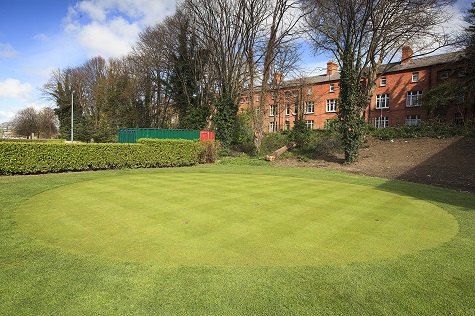
The practice green
But the lockdown had a more personal effect on Rafal. His parents still live in Poland and his mother, in particular has been in poor health recently. Torn between work and concerns for his family, in July 2020, he took the hard decision of taking leave of absence from Ierne Social and Sports Club to travel back to Krakow to look after his parents. He hopes to return back to Ireland this Summer, depending on how the pandemic plays out. The club have been very supportive towards Rafal. They hired a local groundsman on a part time basis and up to six volunteers from the club help with the maintenance of the outdoor facilities. Rafal is in regular communication with them, guiding and advising them on what needs to be done. The club are reassured that Rafal is always at the other end of the phone, ready to take any calls. They look forward to him returning to work again.
Ierne Sports And Social Club is a unique and special place to visit. There are not many clubs like it that offer wonderful facilities to people living in the centre of a large town or city.
 |
|
|
|